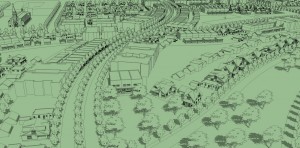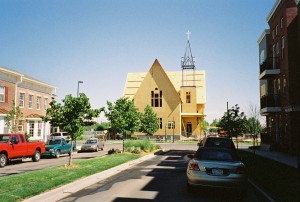
In all neighborhoods, it is important to include a variety, or mixture, of land use opportunities. Religious institutions provide many great opportunities for a neighborhood. The most obvious asset provided is the accessibility and convenience of getting to and from the use. A religious institution incorporated into the framework of a neighborhood provides the option of walking. This is an aspect to today’s planning that is lacking across the country. When we separate uses by arterials, collectors, etc., the convenience and opportunity of walking is lost. In a recent interview on NPR, the Director of Transportation in Washington D.C., Gabe Klein, stated “when you make it hassle free and inexpensive for people to use a certain mode (of transportation), they will use it.” With single-use, isolated “neighborhoods”, the option is not there. A walk is considered exercise instead of a mode of getting from one place to another.

All religious institutions also include parking lots, which could be thought of as a liability. Properly planned religious institutions utilize the parking for uses outside of the peak time for the institution, or shared parking. For example, the prime time for a church is Sunday morning where multiple services may take place. This is not the prime time for a restaurant or retail establishment. However, the synergy created between these land uses becomes a major asset to each use. A patron of a church may find it very convenient to park once and walk to a restaurant after the service, or even prior to the service to a coffee shop.
Religious Institutions also typically provide unique and ornate architecture to a neighborhood. They create fantastic focal points in a community and in-turn can increase property values for the adjacent uses. New Urbanists often utilize terminated vistas in the planning of neighborhoods. In Colorado, the terminated vista is typically a peak of a mountain, but in some instances like at Bradburn, a church is one of the terminated vistas.






